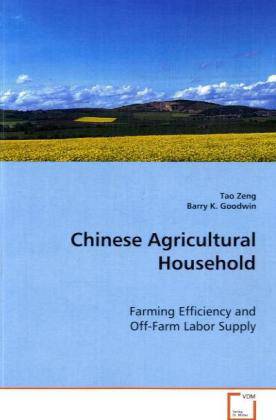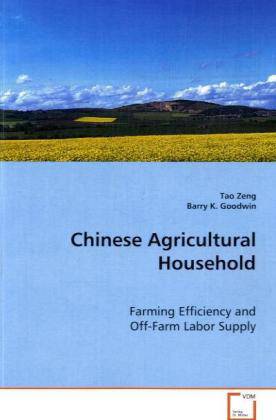
Bedankt voor het vertrouwen het afgelopen jaar! Om jou te bedanken bieden we GRATIS verzending (in België) aan op alles gedurende de hele maand januari.
- Afhalen na 1 uur in een winkel met voorraad
- In januari gratis thuislevering in België
- Ruim aanbod met 7 miljoen producten
Bedankt voor het vertrouwen het afgelopen jaar! Om jou te bedanken bieden we GRATIS verzending (in België) aan op alles gedurende de hele maand januari.
- Afhalen na 1 uur in een winkel met voorraad
- In januari gratis thuislevering in België
- Ruim aanbod met 7 miljoen producten
Zoeken
Chinese Agricultural Household
Farming Efficiency and Off-Farm Labor Supply
Tao Zeng
Paperback | Engels
€ 88,45
+ 176 punten
Omschrijving
This dissertation deals with the off-farm laborsupply of Chinese agricultural households.The first objectiveexplores the relationship between the farm operators'off-farm labor supply and the household's farmingefficiency.The theoretical model predicts an inverserelationship between farming efficiency and off-farmlabor supply. However, the empirical results showthat the agricultural production technical efficiencyexhibitsno significant effect on off-farm labor supply. Thereappears to be a surplus of labor in the agrariansector in China. Restrictions on the movement oflabor among regions and in the reallocation offarmland serve to maintain this surplus and thusbring about economic inefficiencies.The second objective investigates the switchingnature of the operator's off-farm labor supplydepending on the spouse's participation status inoff-farm labor markets. The off-farm laborsupply behavior of operators with spouses workingoff-farm exhibits some differences from that of theoperators with spouses' not working off-farm. Theresults support that the agricultural household is amore relevant decision unit for resource allocationthan is its individual members.
Specificaties
Betrokkenen
- Auteur(s):
- Uitgeverij:
Inhoud
- Aantal bladzijden:
- 176
- Taal:
- Engels
Eigenschappen
- Productcode (EAN):
- 9783639059595
- Verschijningsdatum:
- 29/08/2008
- Uitvoering:
- Paperback
- Afmetingen:
- 150 mm x 220 mm
- Gewicht:
- 281 g

Alleen bij Standaard Boekhandel
+ 176 punten op je klantenkaart van Standaard Boekhandel
Beoordelingen
We publiceren alleen reviews die voldoen aan de voorwaarden voor reviews. Bekijk onze voorwaarden voor reviews.









